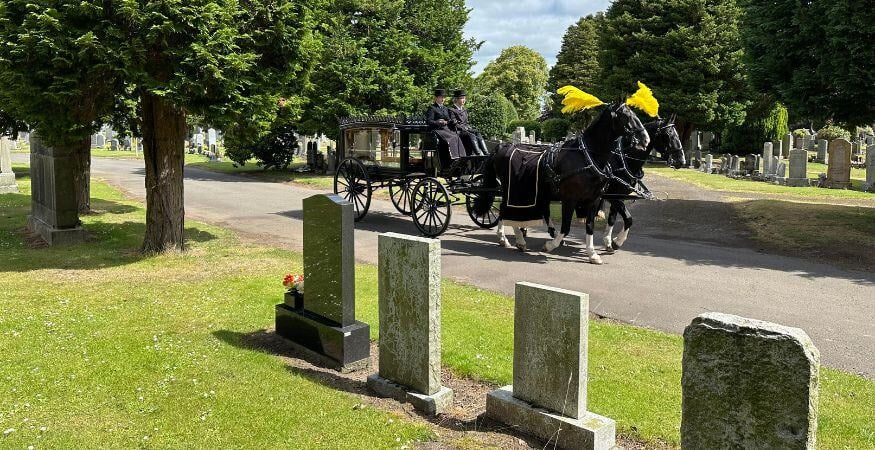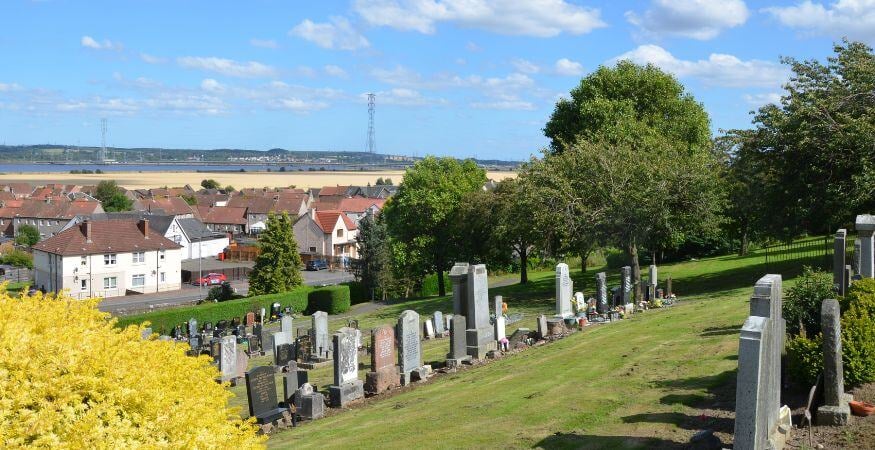Located in the heart of central Scotland, Falkirk Council is responsible for 13 cemeteries and 1 crematorium, managed by a small Bereavement Services team that carries out approximately 2,000 cremations and 1,000 burials per year.
The Council implemented PlotBox in 2019.
In a recent webinar, we spoke with Customer Business Support Section Lead, Lynn Garvin who described the council’s digital journey with PlotBox.
Here are ten things we learned:
One: Going digital is no longer a choice
While many other Local Authority services have already been digitised, there is a feeling that bereavement services have been left behind, with many still relying on paper-based systems and processes.
That may be seen as a holdover from how things were recorded in the past, and the nature of having to retain records permanently.
Mirroring many local authorities, Falkirk had been using computer systems since the nineties, while anything prior to that was captured on paper: old cemetery books, cremation cards, cemetery maps etc.
For many, the Covid pandemic became a catalyst for digital change almost overnight. Those who had wanted digital agility for some time, now found that it was a necessity.
Change can be difficult, especially when using the same system and same processes for many years, but having PlotBox puts Falkirk in a good place to act quickly; this also places them on a future-proof path of continued compliance with relevant regulations brought into effect by the Scottish Government.
Two: The impact of digital maps on service delivery, resilience and genealogy
Prior to PlotBox, grave searches would mean either relying on staff knowledge or pulling out old books and maps - all of which was time-consuming.
Like many local authority areas, genealogy tourism is popular, with people coming into the cemetery to trace their history and their ancestry. This has become part of the team’s day-to-day - and while the team are always happy to help, they know their to-do lists are growing.
With the introduction of the Everafter genealogy portal, that time has now been reduced, with staff encouraging people to access their burial records online.
Whilst reducing the admin burden, this also promotes an improved customer experience, offering self-service at a time when many will expect a digital offering.

Three: Understanding the reasons for moving forward
One of the reasons a change was needed was the feeling that bereavement services processes were stuck in the past.
Paper comes with limitations and inefficiencies, as well as the risk of things going missing or getting lost when being passed from one person to another.
One potential scenario is a family arriving at the cemetery to find a grave that hasn’t been prepared due to a dig ticket not reaching the grounds team; thankfully, not something Falkirk has encountered due to their robust checking procedures.
Four: Consider the strategies for change management
Key for Lynn was bringing people along on their transformation journey - making sure that they were aware of what was coming and being provided with the necessary training.
Getting people involved in change is always preferable to surprising them with it.
Everyone has their own ideas of how things should be done and because of that, it’s good to put everybody's ideas on the table and just see how everyone can go forward together.
It's much better to have the wider team involved in the early stages, rather than solely the manager or head of service.
Being such a sensitive profession, people can be wary of changing the way they do things, due to any potential negative impact on the families they serve.
In this way, you can't just close the doors and not deal with burials and cremations to focus solely on the project.
It doesn’t just stop.
Five: Appreciate the challenges of transformation
Given how old and spread out they were, transferring records and maps into a digital format was a challenge. For cemetery mapping, Falkirk effectively started from scratch, with no plot location maps.
With the mapping digitisation process, and creating potentially thousands of layers of information - having both PlotBox and internal GIS colleagues to support, was a huge benefit.
And with that, great progress has been made in capturing headstone and memorial images and linking those to plot records.
Six: Measure the Impact on day-to-day operations
Processes have become much more streamlined for the Falkirk team, with several key items discussed.
In using the Memorial Mason portal, they can now accept permit applications online, and allow Masons to submit the required documentation electronically.
As mentioned, the Council has launched EverAfter, providing public access to burial records, walk-to-grave directions, and access to headstone images, also reducing the time the Council must spend responding to grave searches.
The Council is also exploring the PlotBox Funeral Director Portal, to future improve stakeholder experience and reduce the number of calls coming into the office.
Again, this will remove the need to print and store documentation, as the required paperwork can be submitted electronically.
Seven: Crawl, walk, run
At PlotBox, we often hear clients saying that they want to do everything at once. At that point we have to ask - does that make sense for you as a service?
For Falkirk, it didn’t make sense to go big and try to do everything at once. For them, it was important to step back and think about what was important, and what needed to be done first.
Having been live since 2019, they’re still going through that journey - a ‘crawl, walk, run’ scenario - and the type of controlled digital transformation process that any organisation might go through.

Eight: Partnership is key
At PlotBox, Customer Success Managers (CSM) are, in effect, the customer’s partner - an advocate making sure the client is getting the best out of the software solution and what’s right for them.
On the face of it, two councils may look like they’re doing the same thing, but in reality, their processes, priorities and team structure could be very different.
That’s why it’s important that a Customer Success team really gets to know their customer.
Regular meetings allow the client to raise any concerns, while the Customer Success Manager can provide information on any changes or updates to PlotBox that they can benefit from.
In that way, a large part of the role is building the client’s knowledge base.
The PlotBox solution can do a lot, but it's about drawing out what functions will deliver the most benefits for each individual customer.
Nine: People, processes, technology
Within a digital transformation, the technology involved is just one part of a larger framework, and not something that simply ends at the install.
Also to consider are the processes involved and the people that will carry them out.
Those processes will have a huge impact on day-to-day functions, which is why a project should be considered very much as a partnership that goes beyond a software Go live date.
It's about what we want to do next together. What are the next goals we want to achieve? What's the impact that we want to make for the service?
Ten: Advice for other councils
Think about what you want to work towards. Do you want to go fully digital?
Remember, you can’t do everything at once, so what do you want to do first?
Be mindful that it’s something you're going to have to work towards, and that it can take time. There will be work to be done in-house to help your partner to do their part.
The more you keep your records current, the more you will get out of PlotBox - make sure they’re accurate and up to date [before they're migrated to the new system].
Think about what your end goal is and always feel encouraged to put your ideas forward in helping to develop PlotBox further.
Watch the webinar in fill below:

